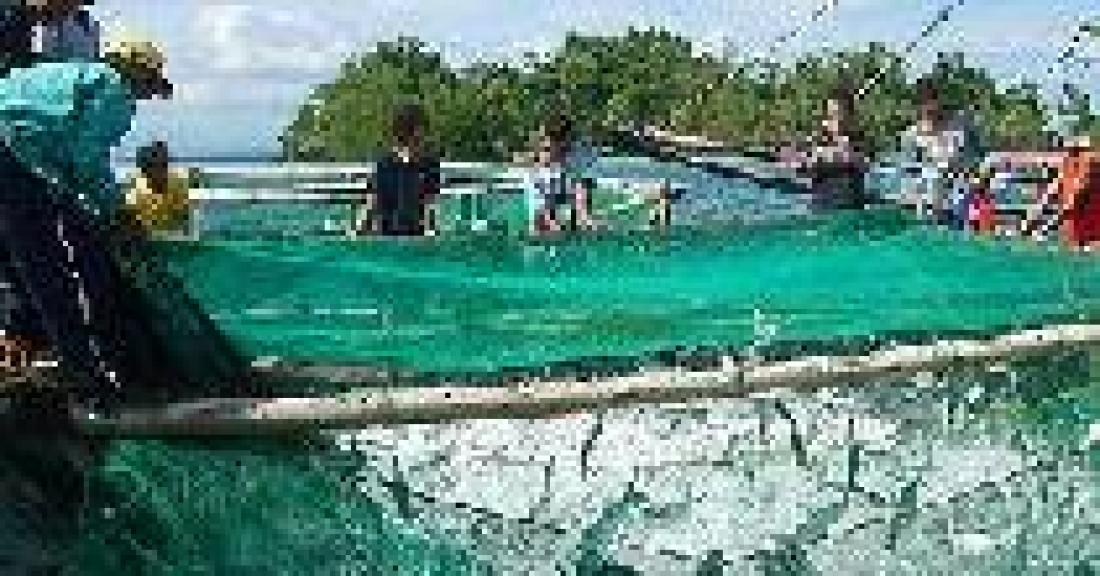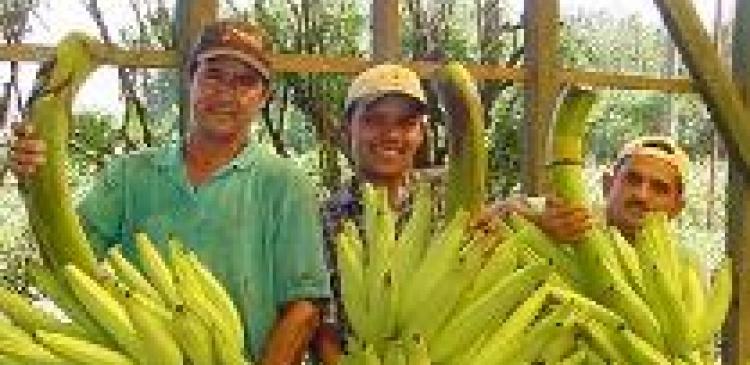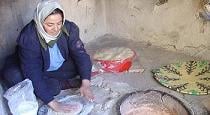Southeast Asian Fisheries Development Center
BREAKTHROUGH SUPPLIES YOUNG FISH TO A HUNGRY INDUSTRY
Fish farmers in the Philippines today have a larger, more reliable supply of milkfish seed stock, or fry, to raise in their ponds and marine pens than they did 30 years ago. They also have better feeding and rearing methods for this very popular, nutritious, and affordable fish.
The improvements came thanks to pioneering research by a multinational team of scientists at the Southeast Asian Fisheries Development Center (SEAFDEC). During the 1970s and 1980s, IDRC provided significant funding and technical support for this work.
In 1978, SEAFDEC first spawned milkfish, or bangus as it is called in the Philippines, in captivity. The technological breakthrough made the industry’s growth possible in Southeast Asia. At the time, the Philippines produced about 200,000 tonnes of milkfish. Aquaculturists stocked their ponds exclusively with wild fry netted in shallow coastal waters during the April to October spawning season. Artisanal collection provided income for many coastal fishers, but it could not supply fry year-round.
In 2009, the Philippines produced 350,000 tonnes of milkfish. Fish farmers buy fry from four Filipino hatcheries, Indonesian and Taiwanese hatcheries, and wild fry gatherers, says the Philippine Bangus Hatcheries Association.
SEAFDEC has provided hatcheries and milkfish farmers in the Philippines and neighbouring countries with a wealth of practical knowledge and tools for sustainable production. It also trained artisanal gatherers to better handle and transport the 1.5 cm long wild fry, increasing their survival rate.
Milkfish accounts for about half of the farmed fish production in the Philippines. An important source of animal protein, it is vital to the country’s food security.
"The original research done by SEAFDEC eventually opened wide the flood gates that now give fish farmers all over Southeast Asia an abundance of fry and fingerlings all-year long."
— Jaime K. Montalvo, Alsons Aguaculture Corporation, Sarangani, Philippines
-------------------------------------------------
BETTER CASSAVA BOOSTS FOOD SECURIY
Efforts to improve one of the world’s most resilient staples — cassava — have paid off, with lasting and, in some instances, dramatic benefits. Plant breeding has increased this starchy root’s nutritional value and resistance to disease, saving countless lives as a result.
IDRC has long recognized cassava as an important but neglected food crop. Drought tolerant and able to remain intact in dry soil until harvested months or even a year later, cassava is critical to the survival of more than 800 million of the world’s poorest people. These producers and consumers depend on cassava, also known as manioc, for their daily sustenance.
In the mid-1970s, IDRC funded a university researcher and plant breeder, Nagib Nassar, who collected wild species of cassava, mostly in the northeastern part of Brazil. At the time, Nassar was part of a small minority of cassava scientists who valued wild species as a breeding tool. The wild relatives of cultivated cassava, he reasoned, were a rich source of new genes to improve the traits of the cultivated varieties.
“The living collection I established with the help of IDRC continues to this day to support my breeding work,” explains Nassar, now 72 years old and Professor Emeritus at the University of Brasilia.
Higher protein content
Nassar was able to cross some high-protein wild species with cultivated varieties and produce hybrids with higher protein content.
His success was an important step forward because, unlike staple grains such as rice and wheat, cassava contains very little protein.
“One of the biggest drawbacks of cassava, particularly as a drought and starvation food, is that it’s basically carbohydrates without protein,” explains Joachim Voss, a former IDRC program director and later director general of the International Center for Tropical Agriculture, headquartered in Colombia.
“Especially in West Africa. When there’s a severe drought, people are eating cassava and cassava and cassava,” Voss adds.
Resistance to disease
Nassar also used the wild species he collected to breed hybrids that are resistant to cassava mosaic disease, which is caused by a virus transmitted by whiteflies.
“My hybrids were then used by the International Institute of Tropical Agriculture [IITA in Nigeria] to develop the family of cultivars called MS. These have since been adopted and planted by millions of farmers in sub-Saharan Africa,” recalls Nassar.
Without these cultivars, Nigeria, the world’s leading cassava producer, would have suffered greatly from mosaic disease.
Farmers in Brazil’s Federal District also cultivate some of Nassar’s more nutritious and drought tolerant varieties and efforts are underway to distribute planting materials in Central Brazil.
Life-saving applications in Africa
Disease resistant cassava proved instrumental in saving lives in Uganda, where a highly virulent form of the cassava mosaic virus began devastating crops in the late 1980s. About 80% of the country’s 500,000 hectares planted to cassava were affected. In the ensuing years, the sweeping epidemic caused severe food shortages and economic hardship in parts of the country. Several thousand people died of starvation.
With support from IDRC, a team of scientists led by the Ugandan government’s Cassava Research Program at Namulonge launched a bold breeding program. They developed and disseminated new high-yielding varieties that were resistant to the Ugandan strain of the mosaic virus. A central element of the breeding strategy was to incorporate mosaic resistance from IITA’s various cassava lines into the new Ugandan varieties.
The program was a major success. It improved national food security, restored economic balance to agricultural communities, and slowed the spread of the new mosaic strain to other cassava-producing countries of the region.
Collected over 35 years ago, Nassar’s wild breeding stock continues to have a far reaching impact on food security.
"I am from Namulonge in Wakiso District, Uganda. In the 90s our local varieties were attacked by cassava mosaic and other pests to the extent that we were not reaping any crop from our gardens.
I was chosen among the people to host a new cassava variety. Amazingly it did very well and even matured faster than our local variety. Now I have over five acres all planted with the new variety, which is not attacked by cassava mosaic and other pests.
My income has improved. I used to live in a small grass-thatched house. Now I have a three-bedroom house which I built myself. All my children go to school. We also have enough food at home throughout the year because we store what we cannot consume for future use."
— Nsamba Setyabula, Ugandan cassava farmer
--------------------------------------------------
MORE NUTRITIOUS BANANAS RESIST DISEASE
Disease-resistant, high-yielding banana hybrids are bringing food security to small farmers and boosting their incomes. With IDRC support in the 1980s and 1990s, the Honduran Foundation for Agricultural Research (FHIA) developed hybrids that resist Black Sigatoka and Fusarium Wilt — diseases that have devastated banana crops in several parts of the world.
“IDRC believed in FHIA’s work and gave the necessary funds for the research,” recalls Juan Fernando Aguilar, the Foundation’s Banana and Plantain Program Leader, in La Lima, Honduras.
The first breakthrough was the creation of the FHIA-1 hybrid — a.k.a. “Goldfinger.” Although its taste fell short of the Cavendish banana that is commercially available in supermarkets around the world, Goldfinger “showed the world that it’s possible to have a hybrid with high yields and high resistance to disease,” says Aguilar. And it “gave us the line that FHIA’s other hybrids came from.”
Goldfinger’s “brother”, the FHIA-18 — also developed with IDRC support — proved to be tastier. Farmers adopted it in Brazil, where Black Sigatoka had broken out, and Cuba, where farmers couldn’t afford fungicides to protect their bananas against the disease.
FHIA-1 also yielded important new knowledge. For instance, Goldfinger’s taste improved when grown at high altitudes in Australia, showing that hybrids’ qualities are affected by changes in the environment.
The work continues. Recently, in trials under differing local conditions in southern Nigeria’s banana belt, two hybrids (FHIA-17 and FHIA-23) “were among the most preferred varieties,” reports Abdou Tenkouano of the International Institute of Tropical Agriculture. Their wide-scale introduction promises a “significant contribution to food security” in banana-growing regions, says Tenkouano. In addition to resisting disease themselves, the hybrids — when intercropped with traditional varieties — stop diseases from spreading. These hybrids are also being made into flour that can be reconstituted as porridge to supplement children’s diets.
Back in Honduras, FHIA is working to significantly increase the Vitamin A content of hybrid bananas and plantains.
"By inserting resistant varieties (like FHIA-17 and FHIA-23) between traditional, susceptible plants, we ‘trap’ the disease agent and prevent it from spreading. This has a direct impact on food security by restoring the productivity of the traditional varieties."
— Abdou Tenkouano, International Institute of Tropical Agriculture, Nigeria
--------------------------------------------------
WILD PLANTS SPARK REVIVAL IN TRADITIONAL FOODS
In rural Lebanon, women are spearheading a return to healthy and affordable food by promoting local plants and cuisine.
Since 2005, a dozen women in the northern mountain village of Al-Kwakh have gathered daily in a communal “Healthy Kitchen.” They prepare dishes using wild plants such as water parsnip and wild fig, which they also sell in a Beirut market and at catered events, culinary festivals, and a nearby eco-lodge that they run.
These nutrition ambassadors, in Al-Kwakh and in other villages, are spreading knowledge about native plants, culinary traditions, and healthy diets. Their kitchens are part of a comprehensive approach to reducing food insecurity in Lebanon, designed by researchers at the American University of Beirut, using IDRC funds.
The country’s long civil war, combined with the influx of cheap food imports, led to a decline in agriculture. As a result, more people relied on less nutritious processed foods. Poverty made things worse. The researchers’ 2002 study of three villages found that nearly 20% of those surveyed couldn’t afford to buy enough to eat. Another third ate food of inferior quality because they couldn’t afford a healthier meal. Many relied increasingly on a cheap diet heavy on white flour, sugar, and imported oils that are less beneficial than local olive oil.
The researchers discovered that Lebanon’s rich culinary heritage held the key to better nutrition. They studied the nutritional value of more than 40 wild plants and traditional dishes made from them. Newly trained in commercial food preparation and marketing, the nutritional ambassadors are popularizing these widely available foods.
The research, which now involves the University of Ottawa in Canada, continues to focus on local ecosystems and their ability to sustain healthy diets over the long term.





